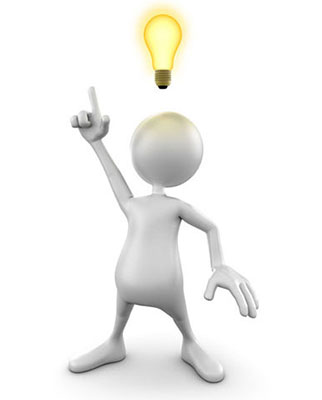How to Make a Successful Email Newsletter
 Most marketers have been there — you’re sitting around a conference room, trying to figure out how to best engage leads and customers, sell more product, or just “stay top-of-mind” for your target audience, and someone decides there’s a solution that can solve all of those problems at once: an email newsletter! Even though email newsletters are one of the most common types of emails to send, they are actually some of the hardest to do right. It’s hard because it includes a mix of different types of content about different parts of your business, including event reminders, surveys, educational information about your product, service, or industry, and promotions. But just because they’re hard doesn’t mean you shouldn’t do them. If done right, you could develop a really engaged subscriber base, and potentially nurture them into qualified leads and customers.
Most marketers have been there — you’re sitting around a conference room, trying to figure out how to best engage leads and customers, sell more product, or just “stay top-of-mind” for your target audience, and someone decides there’s a solution that can solve all of those problems at once: an email newsletter! Even though email newsletters are one of the most common types of emails to send, they are actually some of the hardest to do right. It’s hard because it includes a mix of different types of content about different parts of your business, including event reminders, surveys, educational information about your product, service, or industry, and promotions. But just because they’re hard doesn’t mean you shouldn’t do them. If done right, you could develop a really engaged subscriber base, and potentially nurture them into qualified leads and customers.
Some Advantages of a Newsletter
- Spread brand awareness. By building habitual communication with your email subscribers, you enable them to recognize your brand and associate it with a positive sentiment.
- Leverage existing content. Many companies do quick summaries of their most popular blog posts and link to the articles from their newsletter.
- Include different types of content. For instance, the same newsletter can contain a popular blog post, a new offer, an announcement of an upcoming event, information about a discount, and a link to a survey.
- Guaranteed reach (unlike social media).
 The Anatomy of a Great Email Newsletter
The Anatomy of a Great Email Newsletter
- The content of your newsletter needs to be 90% educational and 10% promotional.
- Once you’ve figured out your newsletter’s focus and content balance, make sure you’re properly communicating about them on your subscribe landing page. Get specific: Tell potential subscribers exactly what will be in the newsletter as well as how often they should expect to hear from you. As a subscriber, wouldn’t that be awesome? You’d go in with open eyes knowing exactly who you will be receiving email from, what they will be sending you, and how often they’ll be sending it to you. As a marketer, having this information up front will help diminish your unsubscribe and spam rates as well.
- Get creative with email subject lines. Even if your subscribers sign up for your emails, there’s no guarantee that they will open your emails once they get them in their inbox. Many marketers try increasing familiarity with their subscribers by keeping the subject line the same each day, week, or month that they send it. But let’s face it, those subject lines get old — fast — for subscribers. Why? Because there’s no incentive from the subject line to click on that specific email right this instant. A better approach would be to try to have a different, creative, engaging subject line for each newsletter you send.
- Pick one primary Call-to-Action. Okay, part of what makes a newsletter a newsletter is that you’re featuring multiple pieces of content with multiple calls-to-action (CTAs). But, that doesn’t mean you should let those CTAs all have equal prominence. Instead, let there be one head honcho CTA — just one main thing that you would like your subscribers to do, and the rest of the CTAs are “in case you have time.” Whether it’s simply to click through to see a blog post or just to forward the email to a friend, make it super simple for your subscribers to know what you want them to do — and then do it.
- Keep design and copy minimal. The trick for email marketers to make a successful email newsletter look uncluttered revolves around two things: concise copy and enough white space in the design.
- Make it easy for people to unsubscribe.
- Make sure images have Alt text.
- Test, test, test. You’ve got to find out what works for your company and your list. Just like different cultures of people prefer different things, different groups of email subscribers prefer different things. So use these email newsletter best practices as a jumping off point…and then experiment to find your secret sauce. Run an A/B test on subject lines. Change up your CTA copy. Heck, even try not including images. The world is your oyster for your newsletter, so find out what it likes.
Follow these guidelines in order to make a successful email newsletter that your customers are interested in reading and forwarding on.
